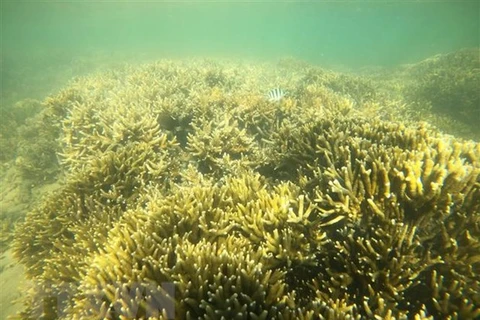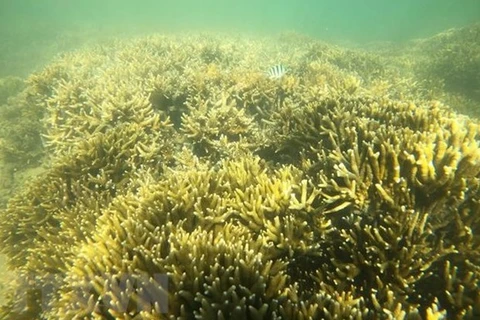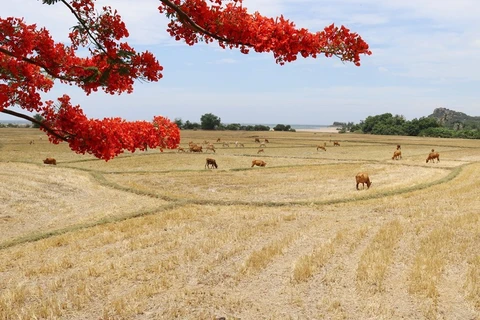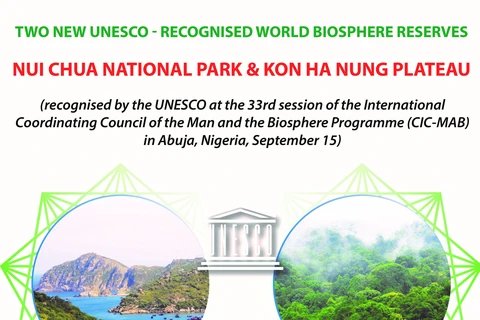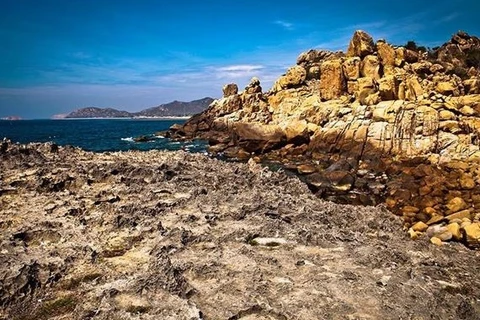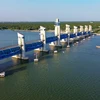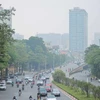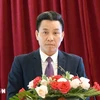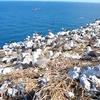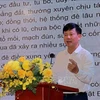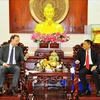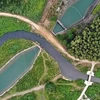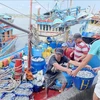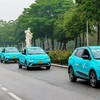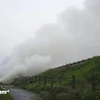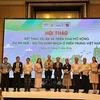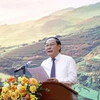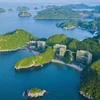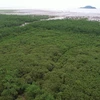Ninh Thuan (VNA) – Authorities of south central Ninh Thuan province has strengthened measures to conserve endangered and rare species of marine fauna and flora, and sustainably restore and develop the ecosystem of the Nui Chua National Park Marine Protected Area.
The provincial People's Committee has issued a plan on management of the Nui Chua National Park Marine Protected Area in the 2021-2025 period with a budget of over 3.3 billion VND (nearly 145,000 USD), which will focus on activities to preserve the value of natural resources and cultural - historical relics, and rationally exploit and promote the value of the marine protected area.
The management of the marine protected area will be carried out on an area of 7,352 ha.
The provincial People's Committee requested the Nui Chua National Park Management Board to strengthen the management and protection of the marine protected area in accordance with regulations on management of marine protected areas in Vietnam; coordinate with relevant departments and sectors to conduct scientific research, restoration and reproduction of aquatic species of fauna and flora and the natural marine ecosystem.
Ecotourism activities in the reserve must not adversely affect the environment of the marine protected area and ensure security and order in the maritime border area.
Resources to be protected and managed in the marine protected area include coral reef ecosystems, and seaweed and sea-grass ecosystems. In particular, priority will be given to endangered, precious, and rare species of flora and fauna listed in the International Union for Conservation of Nature (IUCN) Red List and the Vietnam Red Data Book of Vietnam.
The Nui Chua National Park in Ninh Thuan province was recorgnised by UNESCO as global biosphere reserves at the 33rd session of its International Coordinating Council of the Man and the Biosphere Programme (MAB-ICC) held in Nigeria from September 13-17, 2021.
The 106,646-ha Nui Chua Biosphere Reserve encompasses the terrestrial and marine areas of Ninh Thuan and is located at the end of the Truong Son Mountain Range where the climate is harsh with sunny, hot and arid weather and minimal rainfall.
The Nui Chua Biosphere Reserve is endowed with 1,511 species of flora, of which 54 are recorded in the Vietnam Red Data Book and the IUCN Red List.
It is also home to 765 animal species including mammals, birds and amphibians.
With a sea area of 7,352 ha, the underwater ecosystem of the Nui Chua National Park – the core area of the Nui Chua Biosphere Reserve, is also equally rich. It is home to 304 species of corals, 188 types of seaweed, 147 species of fish, 115 species of molluscs, and 80 species of crustaceans.
According Tran Van Tiep, director of the management board of the reserve, the unit has cooperated with domestic and foreign scientific research organisations to investigate and evaluate potential, and build data on marine resources and environment within the reserve as a basis for implementing projects on environmental protection and marine ecosystem restoration.
The board is implementing synchronously plans and solutions to effectively and sustainably protect sea turtle populations and their habitats, and other endangered and rare aquatic species, Tiep said./.
The provincial People's Committee has issued a plan on management of the Nui Chua National Park Marine Protected Area in the 2021-2025 period with a budget of over 3.3 billion VND (nearly 145,000 USD), which will focus on activities to preserve the value of natural resources and cultural - historical relics, and rationally exploit and promote the value of the marine protected area.
The management of the marine protected area will be carried out on an area of 7,352 ha.
The provincial People's Committee requested the Nui Chua National Park Management Board to strengthen the management and protection of the marine protected area in accordance with regulations on management of marine protected areas in Vietnam; coordinate with relevant departments and sectors to conduct scientific research, restoration and reproduction of aquatic species of fauna and flora and the natural marine ecosystem.
Ecotourism activities in the reserve must not adversely affect the environment of the marine protected area and ensure security and order in the maritime border area.
Resources to be protected and managed in the marine protected area include coral reef ecosystems, and seaweed and sea-grass ecosystems. In particular, priority will be given to endangered, precious, and rare species of flora and fauna listed in the International Union for Conservation of Nature (IUCN) Red List and the Vietnam Red Data Book of Vietnam.
The Nui Chua National Park in Ninh Thuan province was recorgnised by UNESCO as global biosphere reserves at the 33rd session of its International Coordinating Council of the Man and the Biosphere Programme (MAB-ICC) held in Nigeria from September 13-17, 2021.
The 106,646-ha Nui Chua Biosphere Reserve encompasses the terrestrial and marine areas of Ninh Thuan and is located at the end of the Truong Son Mountain Range where the climate is harsh with sunny, hot and arid weather and minimal rainfall.
The Nui Chua Biosphere Reserve is endowed with 1,511 species of flora, of which 54 are recorded in the Vietnam Red Data Book and the IUCN Red List.
It is also home to 765 animal species including mammals, birds and amphibians.
With a sea area of 7,352 ha, the underwater ecosystem of the Nui Chua National Park – the core area of the Nui Chua Biosphere Reserve, is also equally rich. It is home to 304 species of corals, 188 types of seaweed, 147 species of fish, 115 species of molluscs, and 80 species of crustaceans.
According Tran Van Tiep, director of the management board of the reserve, the unit has cooperated with domestic and foreign scientific research organisations to investigate and evaluate potential, and build data on marine resources and environment within the reserve as a basis for implementing projects on environmental protection and marine ecosystem restoration.
The board is implementing synchronously plans and solutions to effectively and sustainably protect sea turtle populations and their habitats, and other endangered and rare aquatic species, Tiep said./.
VNA

